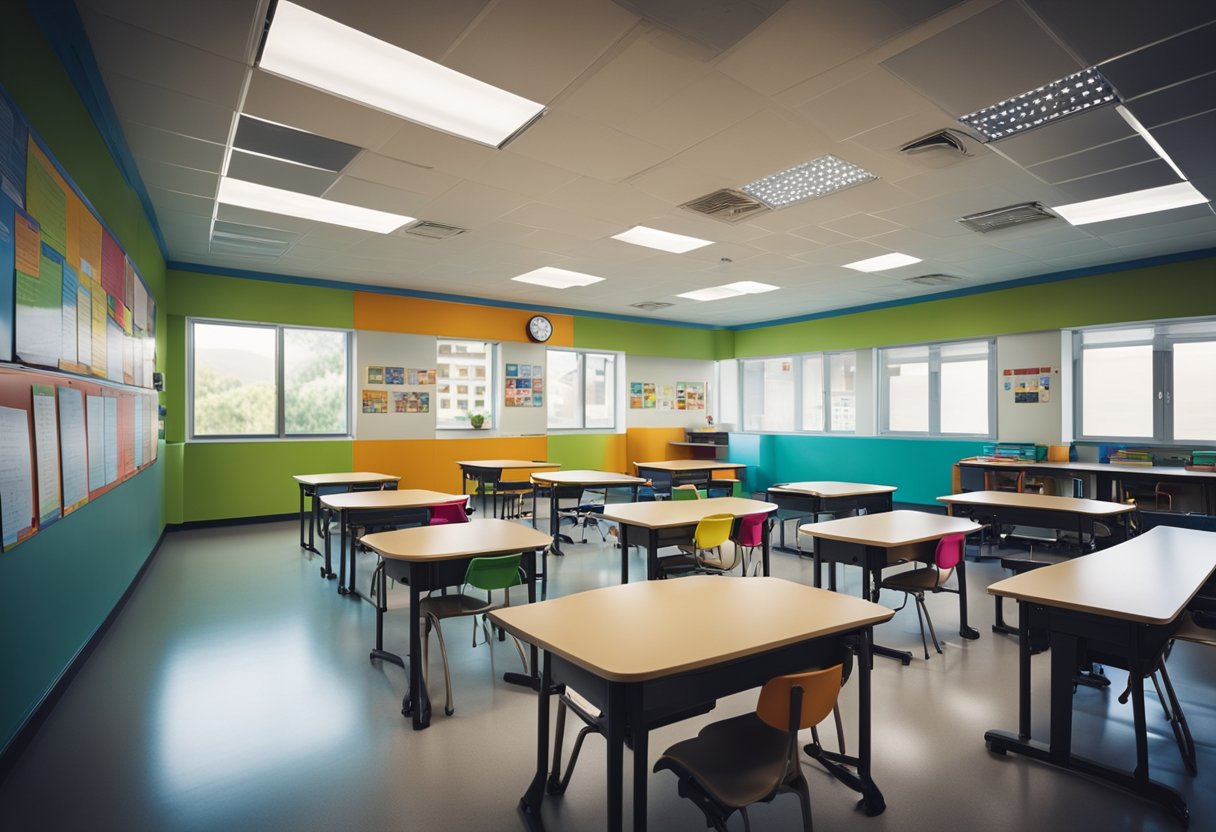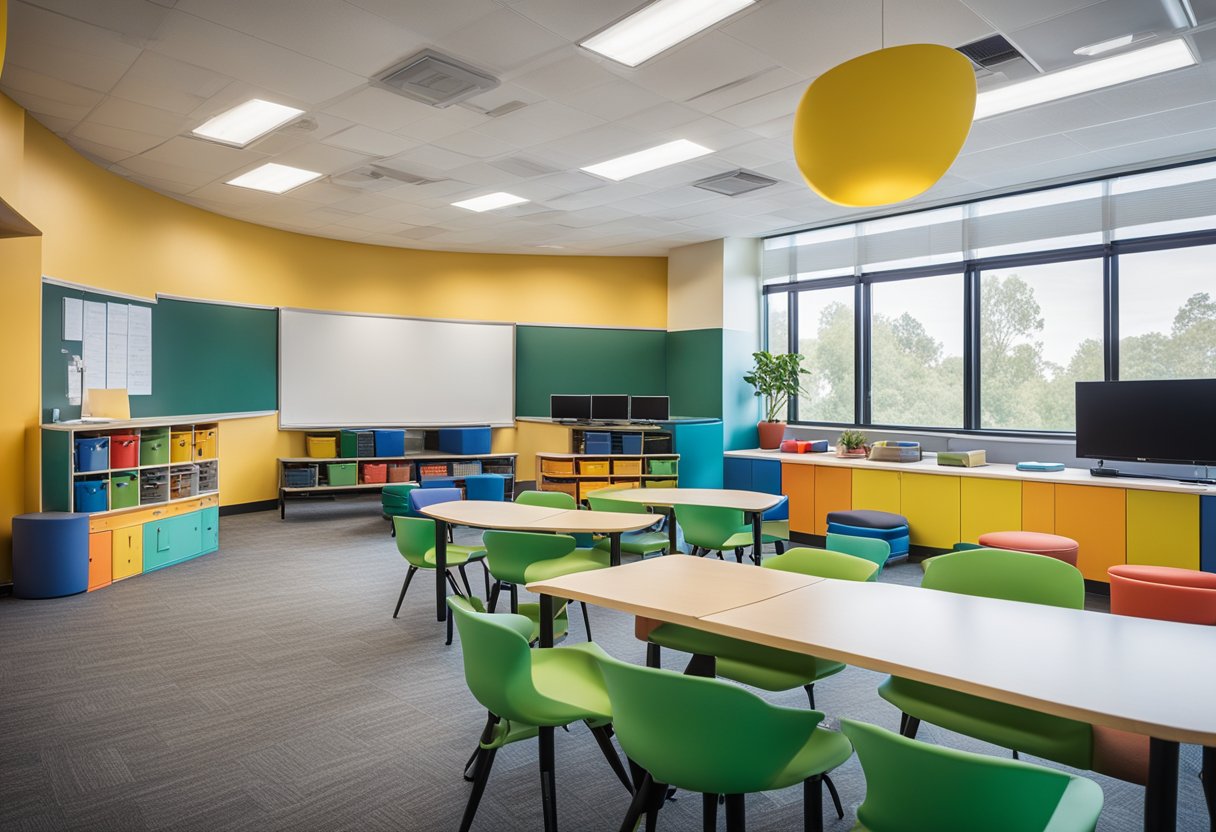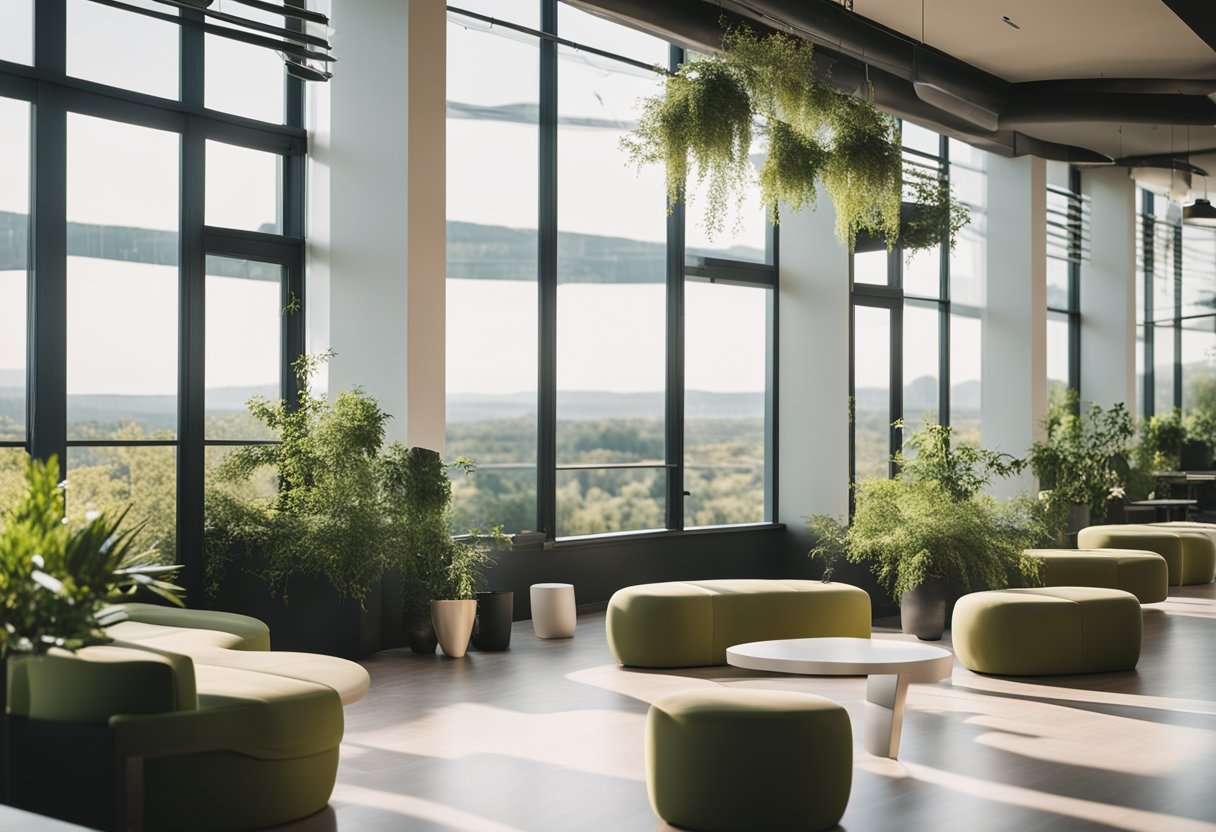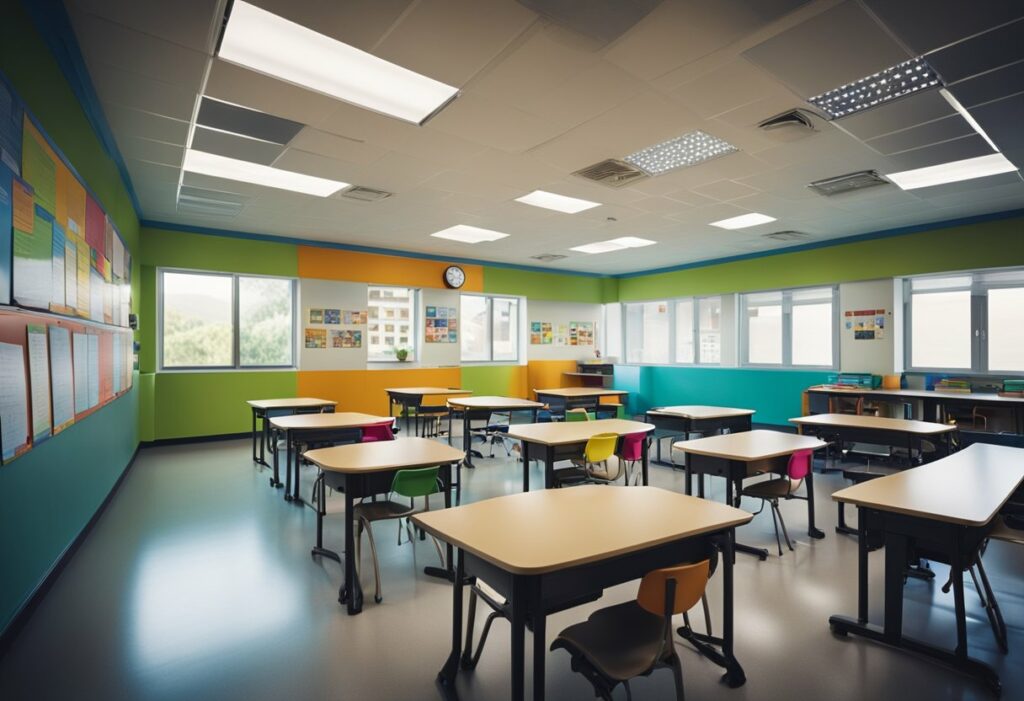Revolutionising Learning Spaces: Interior Design for Educational Facilities
If you’re involved in education, you know that the environment plays a significant role in shaping the learning experience. The design of educational facilities can impact the mood, behaviour, and performance of students and staff. Interior design is an essential element of creating engaging learning environments that promote well-being, productivity, and creativity.

Designing Engaging Learning Environments Incorporating engaging design elements into educational facilities is essential to create an environment that promotes learning and creativity. This includes the use of colour, lighting, furniture, and technology. For example, the use of bright colours can create a positive and stimulating environment that encourages creativity and productivity. Lighting is also a crucial element of interior design, as it can impact mood and energy levels. The use of natural light can improve well-being and promote a sense of calmness and relaxation.
Cultivating Well-Being in Educational Settings Well-being is a crucial aspect of the learning experience, and the design of educational facilities can play a significant role in promoting it. This includes the use of natural materials, such as wood and plants, which can create a calming and relaxing environment. The incorporation of green spaces and outdoor learning areas can also promote well-being and improve academic performance. Additionally, the use of ergonomic furniture can reduce physical strain and discomfort, improving well-being and productivity.
Key Takeaways
- Interior design plays a crucial role in creating engaging learning environments that promote well-being, productivity, and creativity.
- The use of colour, lighting, furniture, and technology are essential elements of engaging design in educational facilities.
- The incorporation of natural materials, green spaces, and ergonomic furniture can promote well-being and improve academic performance.
Designing Engaging Learning Environments

As an interior designer or architect, you have the unique opportunity to create innovative classrooms and learning environments that can enhance the learning experience for students. By incorporating natural elements into the design, creating dynamic and versatile educational spaces, and paying attention to acoustics and ventilation, you can create a positive learning experience for students.
Innovative Classrooms for Enhanced Learning
Innovative classrooms are designed to be dynamic and versatile, allowing students to work in a variety of different configurations. This can include movable furniture, flexible seating, and interactive whiteboards. By creating a space that is conducive to collaboration and group work, you can foster a positive learning environment that encourages creativity and critical thinking.
Incorporating Natural Elements into School Design
Incorporating natural elements into school design can have a significant impact on the learning experience of students. Natural light, for example, has been shown to improve academic performance and mood. By designing classrooms with large windows and skylights, you can maximise natural light and create a more inviting and uplifting learning environment. Adding plants to the interior spaces can also improve air quality and create a more relaxing atmosphere.
Creating Dynamic and Versatile Educational Spaces
Creating dynamic and versatile educational spaces can help to maximise the potential of learning spaces. By designing classrooms with movable walls and flexible furniture, you can create a space that can be easily adapted to suit different types of learning activities. This can include group work, individual study, and teacher-led instruction.
When designing educational spaces, it is also important to pay attention to acoustics and ventilation. Poor acoustics can make it difficult for students to hear and concentrate, while poor ventilation can lead to a stuffy and uncomfortable environment. By designing classrooms with sound-absorbing materials and proper ventilation systems, you can create a more comfortable and productive learning environment.
Overall, the design of educational facilities plays a critical role in creating a positive learning experience for students. By incorporating natural elements, creating dynamic and versatile educational spaces, and paying attention to acoustics and ventilation, you can create a space that fosters creativity, critical thinking, and collaboration.
Cultivating Well-Being in Educational Settings

Designing educational spaces that promote well-being is crucial for student and staff success. A calming and welcoming environment can help reduce stress and anxiety, increase student engagement, and improve overall academic performance. In this section, we will explore design strategies that can help cultivate well-being in educational settings.
Supporting Staff and Students with Comfortable Interiors
Comfortable interiors are essential for promoting well-being in educational settings. Comfortable seating, for example, can help reduce physical discomfort and improve concentration. When designing educational spaces, it is important to consider the needs of both staff and students. Providing comfortable seating options for staff can help reduce fatigue and improve productivity.
In addition to comfortable seating, it is important to consider the use of natural light and calming colors. Natural light can help regulate the body’s circadian rhythm, promoting rest and relaxation. Calming colors, such as blues and greens, can help reduce stress and anxiety, creating a peaceful environment for learning.
Design Strategies for Post-Pandemic Educational Facilities
The COVID-19 pandemic has highlighted the importance of designing educational spaces that are adaptable to changing circumstances. As we move towards a post-pandemic world, it is important to consider design strategies that can help promote well-being while also addressing new challenges.
One strategy is to incorporate elements of the home environment, such as comfortable seating and soft furnishings, into educational spaces. This can help create a sense of familiarity and comfort, reducing stress and anxiety. Another strategy is to create flexible learning spaces that can be easily adapted to meet changing needs. For example, furniture on wheels can be easily reconfigured to accommodate different teaching styles and group sizes.
In conclusion, designing educational spaces that promote well-being is essential for student and staff success. By incorporating comfortable interiors, natural light, and calming colors, we can create a peaceful environment for learning. As we move towards a post-pandemic world, it is important to consider design strategies that can help address new challenges while also promoting well-being.
Frequently Asked Questions

How can innovative interior design enhance the learning experience in schools?
Innovative interior design can greatly enhance the learning experience in schools by creating an environment that is conducive to learning. When designing educational spaces, it is important to consider the needs of students and educators. Innovative interior design can include features such as flexible spaces that can be easily reconfigured to suit different learning styles, the use of natural light to create a calming atmosphere, and the incorporation of technology to facilitate learning.
What are the essential elements of interior design for a productive classroom environment?
The essential elements of interior design for a productive classroom environment include lighting, acoustics, ventilation, and ergonomics. Proper lighting is essential for creating a comfortable and productive learning environment. Acoustics are also important, as excessive noise can be a distraction and hinder learning. Ventilation is important for maintaining a healthy indoor environment, and ergonomics is important for ensuring that students and educators are comfortable and can focus on learning.
How does interior design contribute to student engagement and motivation in educational settings?
Interior design can contribute to student engagement and motivation in educational settings by creating a learning environment that is visually stimulating and inspiring. The use of colour, texture, and pattern can help to create a dynamic and engaging learning environment. The incorporation of technology and interactive elements can also help to keep students engaged and motivated.
What are the latest trends in creating dynamic and flexible learning spaces through design?
The latest trends in creating dynamic and flexible learning spaces through design include the use of movable walls and furniture, the incorporation of natural elements such as plants and water features, and the use of technology to facilitate learning. The goal is to create a learning environment that is flexible and adaptable to different learning styles and needs.
How can interior design address the diverse needs of students and educators in a facility?
Interior design can address the diverse needs of students and educators in a facility by creating spaces that are inclusive and accessible. This can include the use of universal design principles, such as creating spaces that are easy to navigate and that accommodate a range of physical abilities. It can also include the use of materials and colours that are inclusive and that reflect the diversity of the community.
What role does colour psychology play in the design of educational facilities to boost concentration and learning?
Colour psychology plays an important role in the design of educational facilities to boost concentration and learning. Different colours can have different effects on mood and behaviour. For example, blue is often associated with calmness and focus, while yellow is associated with energy and creativity. The use of colour can be used strategically to create a learning environment that is conducive to concentration and learning.



